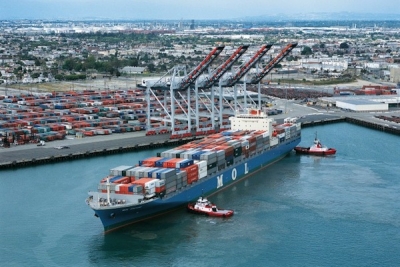US East Coast, West Coast ports paint different picture in 2015: Bimco

The US East Coast and West Coast ports have concluded 2015 on a different beat, with the former recording its best ever year in terms of inbound containers while the latter’s performance was impacted by disputes, according to a latest Bimco report.
Container shipping traffic on the US East Coast registered improved figures in 2015 with 7.9m teu of loaded containers entering the region, representing a 12.6% increase from 7m teu seen in 2014.
Over at the US West Coast, however, labour issues and port congestion have dogged the region’s performance. The quantity of loaded containers entering the region was virtually unchanged at 10m teu in 2015, growing only 0.4% from 2014.
“As the conflict on the US West Coast dragged out, some of the traffic was diverted to US East Coast ports. These ports benefitted greatly from the diverted traffic but also from the fact that this happened at a time when personal consumption of goods in the US was on the rise,” commented Peter Sand, chief shipping analyst at Bimco.
“Going forward, one of the big questions will be whether or not the US East Coast ports can hang on to this new business,” he said.
The Port of New York and New Jersey (PANYNJ) manages the majority of the container trade on the US East Coast, with a total of 6.4m teu handled in 2015. The Port of Savannah also experienced the highest growth rates rising by 20.4% from 2014, with 1.6m teu loaded containers entered in 2015.
The US West Coast, on the other hand, started 2015 on a bad note due to the ongoing contract negotations between the International Longshore and Warehouse Union (ILWU) and the Pacific Maritime Association (PMA). The conflict led to substantial congestion at the western coast ports, with dozens of ships anchored waiting for berths to open.
“Despite two consecutive years of double-digit growth at US East Coast ports, it is important to note that the US West Coast ports still handle more volume,” Sand noted.
“The US West Coast ports handled 56% of the inbound loaded containers into the US, according to Bimco’s data in 2015, but have declined since 2012/2013 where 60% of the business was handled by the US West Coast ports.
“Due to the expansion of the Panama Canal and the lower fuel costs brought about by the lower oil price, we expect to see even more of the Asian imports head towards the US East Coast ports. These ports are currently preparing to cater to ultra-large containerships in the near future,” Sand said.
Contrary to the growing quantity of containers going into the US, the situation was different for outgoing containers, the Bimco report highlighted.
While more and more loaded containers were going into the US, most of them were leaving empty.
The US West Coast ports in particularly were hit the most. Only 4.9m teu of loaded containers left a US West Coast port last year, a drop of 10.2% compared to 2014. On the US East Coast, 5.2m teu of loaded containers were exported in 2015, a slide of just 0.4% from 2014.
HEADLINES
- Do shipping markets want Biden or Trump for the win?
- All 18 crew safe after fire on Japanese-owned tanker off Singapore
- Singapore launching $44m co-investment initiative for maritime tech start-ups
- Cosco debuts Global Shipping Industry Chain Cooperation Initiative
- US warns of more shipping sanctions
- China continues seaport consolidation as Dalian offer goes unconditional